DIVINE LIGHT
In telling a spiritual and personal story that was long in the making, multi-hyphenate filmmaker Warwick Thornton ACS created an atmospheric and absorbing cinematographic piece of work worthy of the Golden Frog in Camerimage’s Main Competition.
Echoing the mysterious powers that come to light in The New Boy, Warwick Thornton ACS – the Australian filmmaker who brought to the screen the spiritual story of a child who is taken to an orphanage – seems to have superpowers of his own, multi-tasking as writer, director and cinematographer to craft frames with a mystical, mesmerising quality.
The cinematographic success of Thornton’s work led him to victory at the recent Camerimage Film Festival where he scooped the Golden Frog in the Main Competition – an achievement the filmmaker considers a career milestone. “Every cinematographer wants to win a Golden Frog,” he says, speaking from his home in Alice Springs shortly after the award win. “And I finally did it. I’ve been nominated three times in the Main Competition so it was third time lucky, and it was very special.”
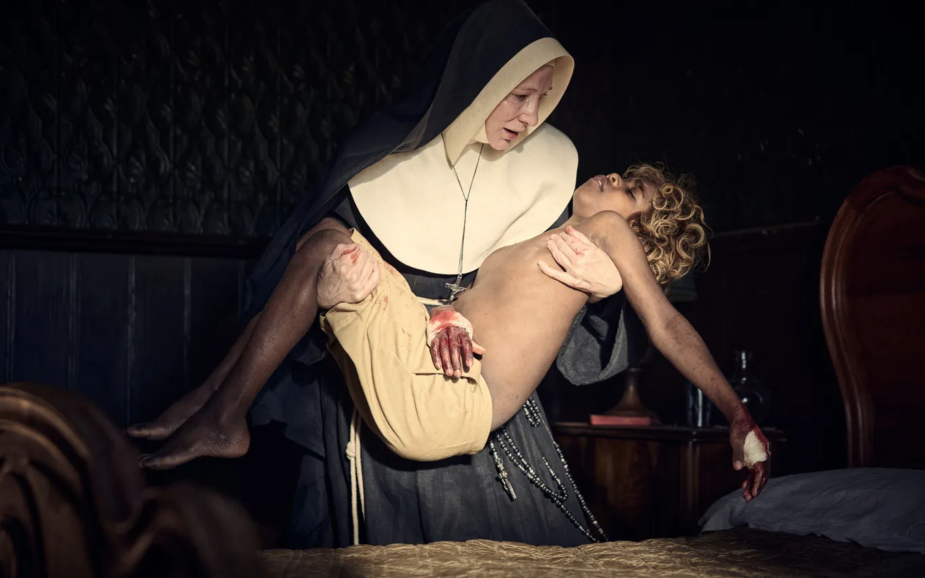
Set in mid-1940s Australia, The New Boy’s titular character is a nine-year-old Aboriginal orphan (Aswan Reid) captured by police and taken in at a remote monastery for Indigenous boys run by Sister Eileen (Cate Blanchett, who also served as one of the film’s producers). The struggle between the child and a police officer that opens the film demonstrates the native boy – who speaks no English and was found wandering the desert – is a force to be reckoned with. The other orphans are initially perplexed by and mock the mysterious, unruly new addition but as they begin to accept him, the wild child’s spiritual powers slowly come to light.
Thornton wrote the script 18 years ago, inspired by his upbringing as an Aboriginal child, navigating new environments and spirituality. Touching on themes including faith and colonisation, the concept was sparked by a “personal experience of being a complete ratbag,” the Indigenous filmmaker explains, “and my mother sending me to a boarding school run by Benedictine Spanish monks.” Born and raised in the small town of Alice Springs in the centre of Australia, Thornton had never entered a church before. “And then suddenly you’re going to Mass every day and twice on Sundays. I had this idea of imagining a child like me, but not me, chucked into a Christian orphanage and suddenly all these people are praying to a man who is being tortured on a cross. What would that child think?”
Taking on director, writer and cinematographer roles is “the world I live in”, says Thornton, having done so on previous productions Sweet Country (2017) and Samson & Delilah (2009) (which scooped awards including the Camera d’Or at Cannes and AACTA Award for Best Cinematography). But his filmmaking journey has primarily been as a cinematographer, shooting multiple features for directors for around 20 years.

“I then started writing movies I’d like to shoot. When I suddenly started getting funding I thought I should find a director but the backers would only give me money if I directed. It wasn’t part of my plan, but I agreed to it with the earlier films,” he says. “But some directors wouldn’t work with me again because I was now directing and suddenly I didn’t get work as a DP. It became a catch-22 situation, but ultimately it was good for me and I’m happy with where I am now.”
Wearing multiple hats meant situations, locations and colour palette could be determined earlier when the script was written. As Thornton highlights, “it was clear what my shortfalls were as a director as well as the things I’m good at while also understanding the DP’s role.” Writing what he wants to shoot is an opportunity Thornton believes “every DP would love” as they are creatives who are “all about character, arc, and capturing a cinematic image.”
Finding his previous experiences of shooting with two or three cameras on location became more “about keeping a watch on time and schedule” than about creativity, in an attempt to “declutter the camera department” Thornton wanted to shoot The New Boy with one camera and three lenses.
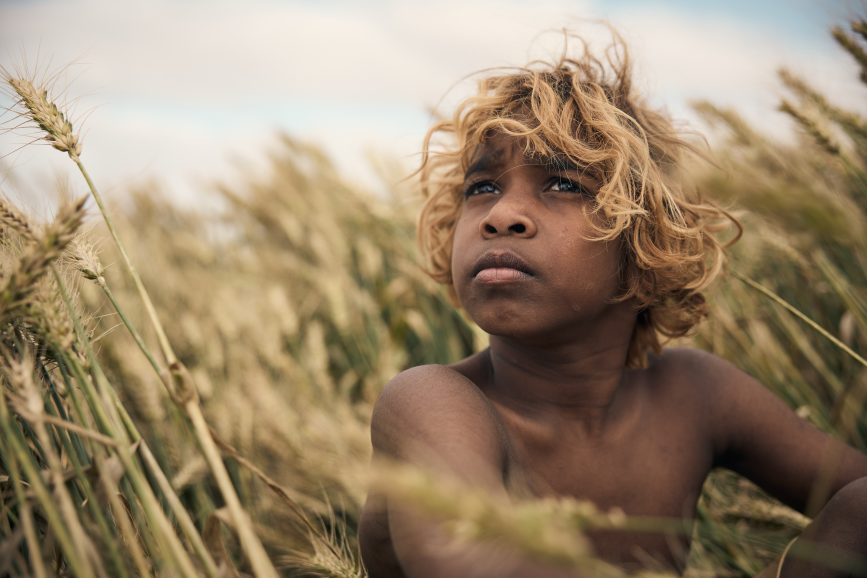
“The first AD must methodically go through each angle with that one camera. You don’t feel like you’re directing television with three monitors and three different angles. You’re focusing on one performance on one monitor from one camera.”
But the single-camera approach also came with challenges, involving more work to capture certain scenes. “They say ‘never work with animals or children’ and I was naïve writing a story featuring eight children, and lots of sheep, snakes, and horses. They were all beautiful but it was demanding as the children had never been on a film set so understandably didn’t comprehend continuity and were picking up cups with their left hand and then with their right when we did the wide shot,” he says. “At moments like that I thought if only I had two or three cameras we could just move on. It might be the biggest budget movie I’ve made, but you still face just as many problems.”

Lived experience
Thornton left the early version of the script sitting in a drawer for many years because, he admits, “it was a bad script at first. I had to live, love, cry and be a better human to really work out what the film was about.”
While the story evolved through lived experience, the filmmaker knew the historic mining town of Burra in South Australia he had driven through for years offered the perfect rural setting, complete with rolling hills and seemingly endless fields of golden wheat. “The place is very Days of Heaven. One day I drove some backtracks and found this hill with one little, derelict farmhouse from the early 1800s and half of it had fallen away. I knew that was where we would make the film.”
When Thornton returned with production designer Amy Baker to visit the magical period location, unfortunately 150 wind turbines had been erected there. Despite his team reassuring him the turbines could be removed in post, Thornton was horrified and determined to capture as much in camera as possible. “Ultimately I had to suck it up and they were painted out of the wide shots and I used depth of field to remove them from mid shots,” he says.
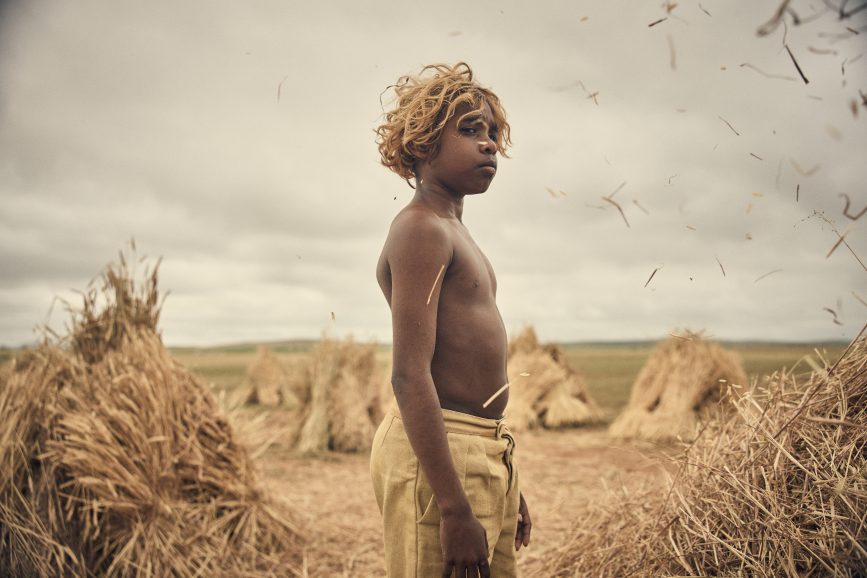
The orphanage set was built, taking composition inspiration from Caravaggio, especially for the monastery arch design. Australian artist Russell Drysdale provided colour stimulus for Thornton who pushed and pulled the tones used to suit the story. The experience of working on a “beautiful period film” where he and his crew had control was a delight for the filmmaker who does not think he would make a ‘70s or ‘80s period film “where you’d have so much to deal with” shooting on the streets of a town or city. “As this was set in 1940s Australian outback, you stand on a hill that’s a blank plot. And because we built the set, it was controlled, comfortable, clear and calm and a pleasure to compose for the camera.”
Production designer Baker and Thornton began with a basic palette of brown and golden hues which the filmmaker refers to as “the Kellogg’s commercial: a breakfast table where everything’s golden – the table, the light.” The multi-hyphenate filmmaker is grateful Baker advised him to avoid turning The New Boy into “17 shades of brown because it’s a period film,” instead suggesting breaking up the palette with a dark, “almost black, Bentley British racing” green.
“The palette I wanted would have quickly become boring,” he says. “But having a designer who really knows colour saved me from my cleanliness and godliness of only using three colours.”
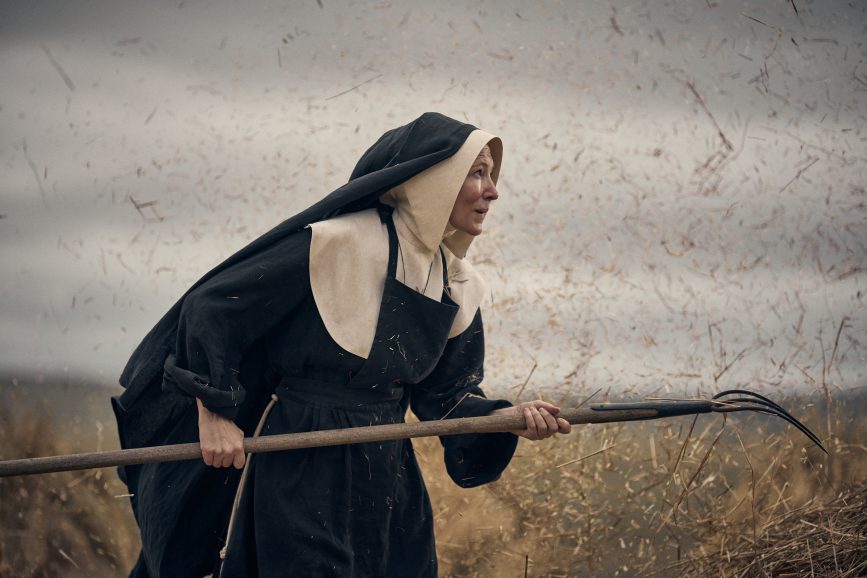
Getting creative
When finding the frame, and working with the grips to set up the tripod or dolly, Thornton starts just under a character’s eyeline and decides where to move next by analysing the scene and whether the character is empowered.
“I’m not someone who puts cameras up in corners of rooms – no one lives up there,” he adds. “That’s a shot as if an owl is watching, not a human in a cinema. Unless you’re shooting a thriller and have the camera up in the rafters all the time, but that never happens with me. Just under the eyeline is the empowering place for all characters.”
Thornton paired the Panavision DXL2 with his “go-to” Panavision vintage C and E anamorphic lenses as he loves the lenses’ “craziness”. Despite traits he admits can sometimes drive him mad – “fracturing badly” – he finds the lenses offer “the best flares”. He requested colourist Trish Cahill not remove the milky hue created as he was not aiming to make a “super clean” movie. “There’s milkiness, fracturing and it can be a little soft in the corner which was to do with the focal length and iris. But I’d make that an artistic choice,” he says.

Working primarily with 80mm to 100mm, Thornton finds this lens set-up perfect for portraits, also allowing him to capture a wide shot. He also fell in love with a 200mm rare Panavision macro anamorphic lens. “Crazy old lenses from the ‘70s soften the hardness of an 8K sensor a little,” he says. “We also worked with the usual suspects – a load of NDs. I used a full pack of Tiffen Black Satin, with an 1/8 on almost everything. For Cate [Blanchett] and Deborah Mailman (Sister Mum) we’d occasionally go to 1/4 in extreme light, but you still want to keep it tactile and subtle.”
Split diopters produced a dreamlike effect for sequences featuring a statue of crucified Jesus in the monastery and when stigmata mysteriously appear on the boy’s body. “I ran amok with those. Rather than using them to create two sharp focal lengths together like an infinite focal length, I used it to completely blur half the frame,” says Thornton.
“Because there’s a clear line where the glass is, you’ll always get a fracture, especially when a light hits it if you’re shooting at night. Normally you’ll try to cut that light out, particularly when you’re using a lot of backlight, but we used that to our advantage and pushed more light to create this haze and fracture.”
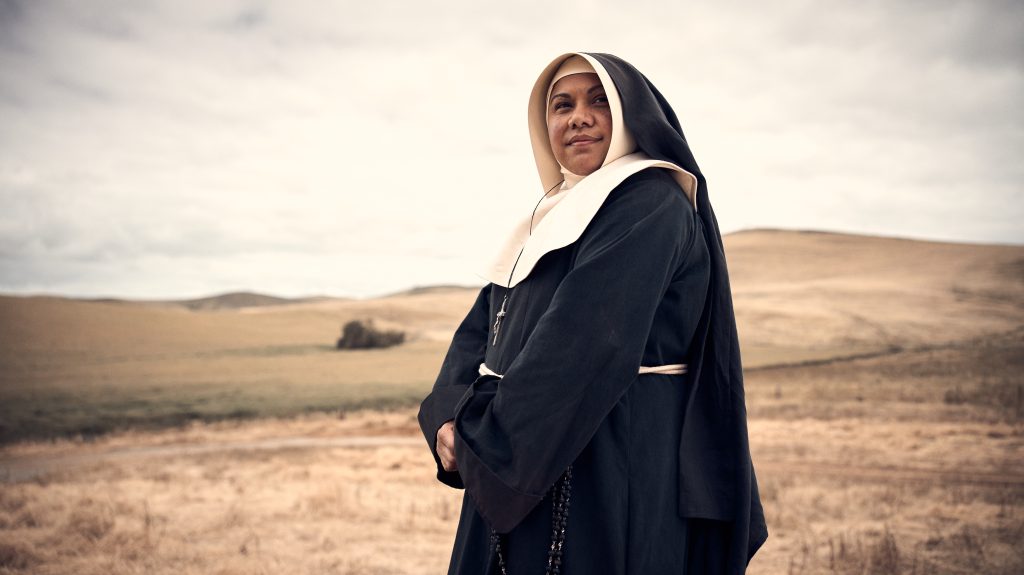
Rather than lock off the camera to “avoid the two focal lengths wobbling around”, Thornton decided the camera had to move with the split diopter, “so the background and foreground played with each other and you’d have something completely out of focus, and your foreground in focus.” In some sequences the camera tilts up towards the church ceiling and as it slowly moves down, half the scene is out of focus, before Jesus on the cross slowly comes into focus as the camera tilts down on him. “It’s almost like he is being revealed out of water,” he says. “It was about playing with split diopters in a different way and having fun.”
In addition to the DXL2, a RED Monstro and DJI Ronin stabilisation gimbal were selected on occasions. “We used the Ronin because we didn’t have a Steadicam operator, so the grips walked side by side if the scene had movement and I wanted to walk with the characters.”
A water-based version of Posca graffiti marker pens helped add a dreamlike quality to some shots. Thornton and A camera operator Jules Wurm put clear glass in trays and used the pens to colour them gold and brown hues before running their fingers over the surface, producing a smudgy effect. “You must realign the depth of field to suit and then a torch held on the edge of the matte box creates more of a glow,” says Thornton. “We could produce the effect in the grade but it’s more enjoyable, artistic and rock ‘n’ roll doing it on set. Sometimes we forget our job is incredibly creative – there are so many beautiful things we can do as well as having fun on set.”
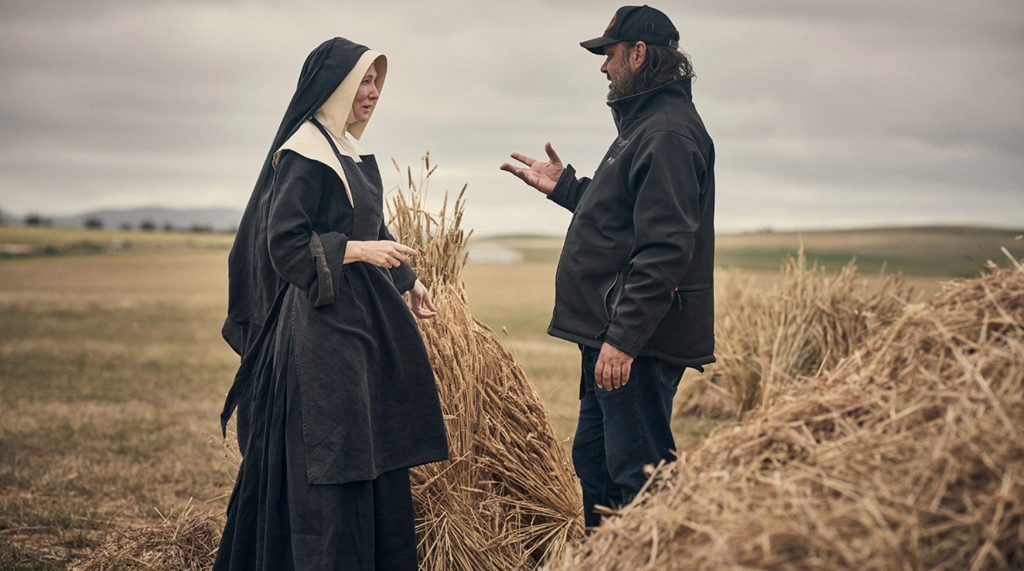
Crew members embracing the filmmaking fun with Thornton include frequent collaborators focus puller Claire Bishop and operator Wurm. “Jules started with me around 25 years ago, loading before moving to focus pulling. I then said she should be the operator for everything we make because I love her work,” he says. “I think that’s part of learning the craft. I started as a loader before focus pulling. But I was the worst focus puller, so I went to operating and then DPing. It’s important to give a leg up if you can so people can move into the role they want to do most. Jules and Claire are family now, and do every film with me.”
Working with Wurm and the grip team, Thornton decides where to “add a little creep in for the camera,” or if a wide shot looks “a bit stagnant,” they lay a track or a slider to inject energy to a shot. “Even if it’s five feet of track, the grips are so fast they can lay that just as quick as putting a tripod down.”
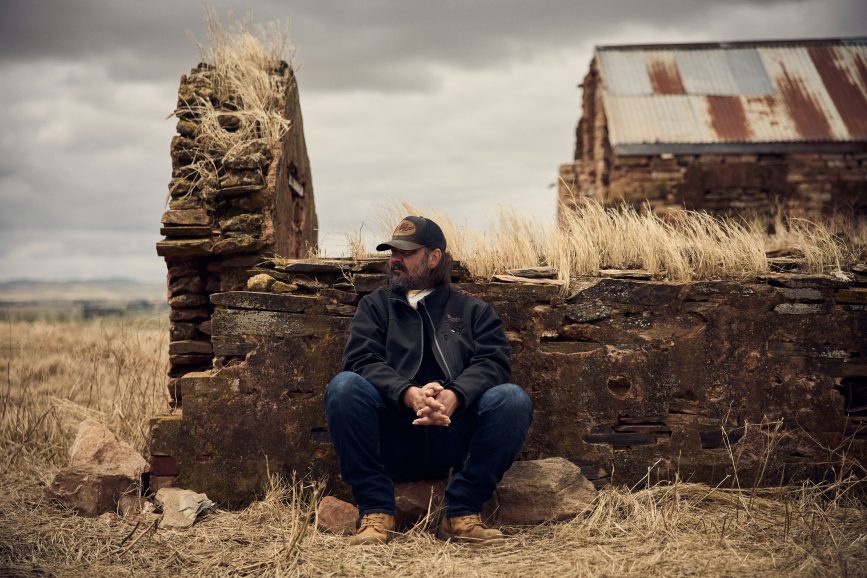
Let there be light
Gaffer Andrew Robertson and Thornton have made many films together, experimenting with new lighting techniques along the way. One experience the filmmaker values from making The New Boy saw the pair explore producing a spark the orphan creates from his hands that is later revealed to have healing powers.
“It was exciting because we used old school techniques after testing all the lenses, LEDs and diodes to see what lens flares we could get and discovering none of them fractured properly inside the lens,” says Thornton, who wanted to achieve the flaring effect manually rather than in post.
“I then put on one of the three lenses – the 100mm – turned it flat out to T8 and at between 12 and 14 feet this beautiful lens flare was created. Only one lens at that stop and those focal lengths worked. A good flare has this halation that feels like you’re looking at the Milky Way through the Hubble telescope.”
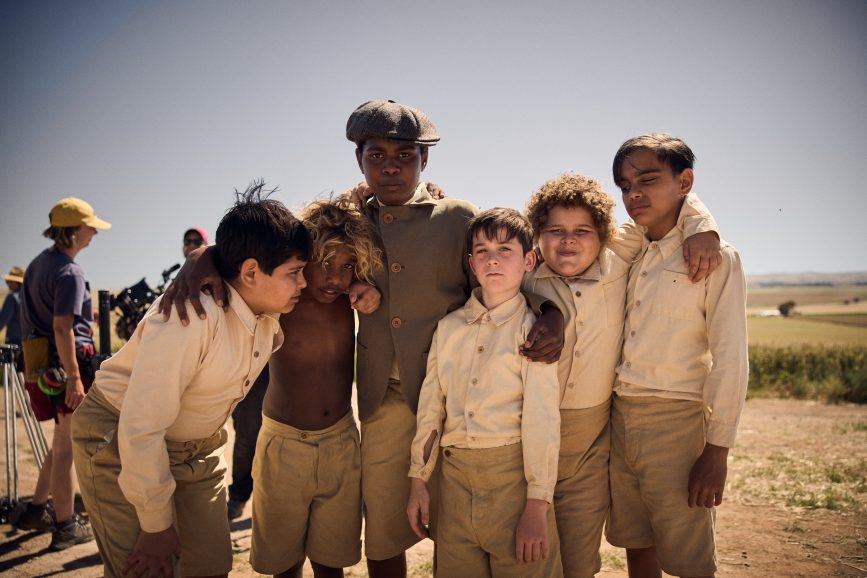
The only light source to make this otherworldly effect possible was a small screw in peanut bulb. “It’s the kind you get in torches with a crazy old tungsten element, mainly used in the ‘20s and ‘30s. We stuck it on a wire I could hold in front of Aswan’s face to get those beautiful flares, as well as the bulb reacting in real time to light falling on his face.” Visual effects supervisor Jonathan Hairman then painted out Thornton’s hand and added a vapour trail.
In keeping with the set-up needed for the isolated farm orphanage, Chinese lanterns were utilised in all rooms. “There’s a lot of light in the day interiors, and I like to use par cans and big lights that beat the hell out of scenes,” adds Thornton. “I used a couple of ARRI SkyPanel S360s for fill in a room, but I like big HMIs most as you can change the glass, wind them in and out and spot them up. As the HMIs are daylight balanced I put a bit of straw on the front to bring down the colour temperature.”
Lighting the vista was difficult as Thornton was working with a range of about 20km, so he often shot day for night, and again used a trusty Posca marker on glass to follow the contours of the range, smudging to create a purpose-built day for night filter. Despite normally shooting at 5.6 when working with vintage lenses, when shooting day for night Thornton likes to set the lenses to 2.8 rather than ND down.

“There was this beautiful window lasting five to 10 minutes when you have the shot set up and just wait until the sun’s glow’s gone, and there’s this perfect place where you can still see all the way from 20km but it’s almost night. You’ve still got that last 10 minutes of ambience where you can shoot a wide shot, you get two or three takes. If I was really smart, I’d do the close-ups first, and just change the depth of field and then crush them down in the grade.”
Frequently scenes written to take place at dawn were shot at dusk or vice versa to suit the type of light the scene demands. Thornton chooses a morning if he wants a clear punctual wide shot because dawn light is much harder than dusk and “almost digital in quality”. In Thornton’s movies “everyone gets a backlight, or if they don’t, they usually have a hat on to help.” And if an actor is not going through too many emotions, the filmmaker is happy to incorporate silhouette and ask them to create emotion through their body language.
During the grade Thornton discussed the emotions of each scene for an hour every morning with colourist Trish Cahill, who the filmmaker considers “one of the best in the business”. The work of stills photographer Ben King who was capturing the action on set was also influential. “Ben was very good and when he was colour grading his stills on set using a laptop I said, ‘Oh my god, this is exactly what I want the film to look like.’ So, I sent them to Trish as a starting point.”
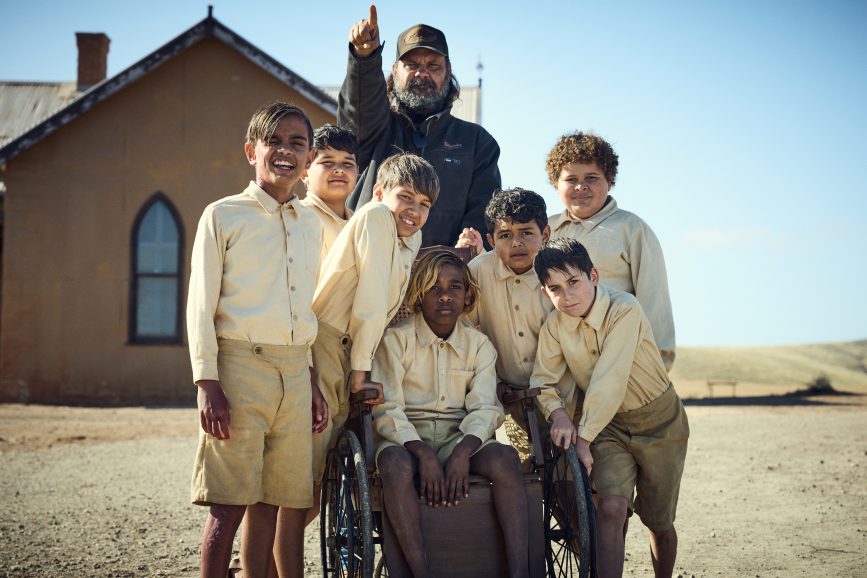
With the graded stills and paintings of Australian artist Russell Drysdale as a reference, the final grade sometimes veered in a different direction to suit certain dramatic moments and support the emotion of the scene. Thornton suggests a new role should be introduced to the filmmaking world – the “LUT stealer”. In 2020, his writer-director-cinematographer son, Dylan River, was DP on A Sunburnt Christmas – a film set on an outback farm ravaged by drought. Six weeks of rain three months before shooting resulted in lush green land, so River created a LUT to rinse out the green.
“I loved the film and the LUT – it’s like the old Kodak 5293 or 5245 stocks, So, I asked him if I could use it and that’s what I’ve done for my past three films which have been great epic Australian period movies and the LUT’s been perfect for,” says Thornton.
Reflecting on the process of telling a very personal story, what does Thornton take away from the experience of making The New Boy? “Don’t listen to the director,” he smirks. “Get yourself two cameras!”


















